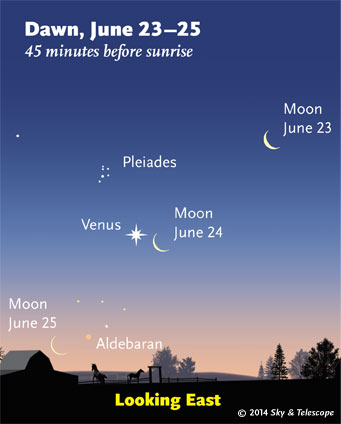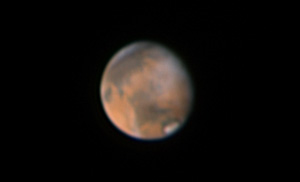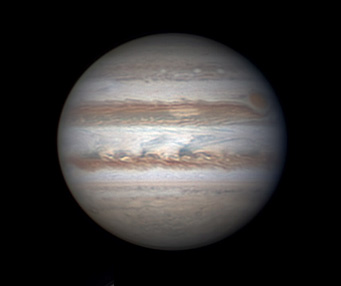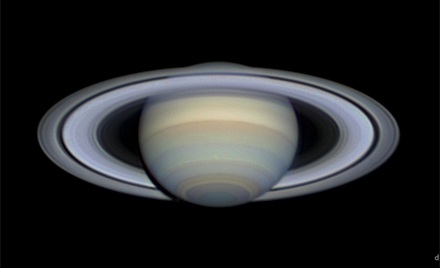
Friday, June 20
This is the time of year when the two brightest stars of summer, Arcturus and Vega, shine equally high overhead as evening grows late: Arcturus in the southwest, Vega toward the east. Arcturus and Vega are 37 and 25 light-years away, respectively. They represent the two commonest types of naked-eye stars: a yellow-orange K giant and a white A main-sequence star. They're 150 and 50 times more luminous than the Sun — which, combined with their nearness, is why they dominate the evening.
Saturday, June 21
If you have a good dark sky, look east as the final glow of twilight fades away. All across the low eastern sky on any clear night now, the starry, mottled band of the Milky Way is looming up. It rises higher through the night and crosses straight overhead around 3 a.m.
The June solstice occurs at 6:51 a.m. Eastern Daylight Time. This is when the Sun reaches its northernmost point in the sky for the year and begins its six-month return south. Summer begins in the Northern Hemisphere, where today is the longest day. In the Southern Hemisphere, this is the start of winter and the longest night.
Sunday, June 22
What is the oldest thing you've ever seen? The Earth, Sun, Moon, and planets are 4.6 billion years old. The age record for people who occasionally glance at the sky might be Arcturus, about 7 billion years old.
But with a pair of binoculars, you can pick up the 7.2-magnitude star HD 140283 in Libra, the constellation that houses Saturn these evenings. This star is in competition for the title of the oldest known, with an age recently measured at about 13 billion years. That means it formed just several hundred million years after the Big Bang. Spot it using the finder chart with Gary Seronik's Binocular Highlight column in the June Sky & Telescope, page 45. This is almost certainly the oldest thing you will ever see.
Monday, June 23
Can you still see Jupiter in the sunset? Look low in the west-northwest about 45 minutes after sundown. If the air is clear it shouldn't be hard. Jupiter is heading away into conjunction with the Sun.
Moon and Venus at Dawn Tuesday. The waning crescent Moon forms a beautiful close pair with Venus in Tuesday's dawn, as seen from the Americas. Look low in the east, as shown at the top of this page. Look early enough, and you can see the Pleiades to their upper right. From other longitudes around the world, the Moon and Venus appear farther apart at the local time of dawn.
Tuesday, June 24
Mars and Spica shine in the southwest after dusk, with Arcturus high above them. Watch Mars move closer to Spica day by day. They'll pass each other on July 13th, just 1.3° apart.
Wednesday, June 25
With Scorpius now in fine evening view, keep an eye on the doings of Delta Scorpii. This is the middle star in the row of three marking Scorpius's head. In July 2000 it unexpectedly doubled in brightness. It has remained brighter than normal ever since, with fluctuations, at about magnitude 2.0. Compare it to Beta Scorpii above it, magnitude 2.6, and Antares, 1.1. See the June Sky & Telescope, page 51.
Thursday, June 26
If you have a really good dark sky, look east as the final glow of twilight fades away. All across the low eastern sky, the intricate, mottled band of the Milky Way is on the rise. It rises higher through the night and crosses straight overhead around 2 or 3 a.m.
Friday, June 27
This is the time of year when, at the end of dusk, the dim Little Dipper (Ursa Minor) floats straight upward from Polaris (the end of its handle) — like a helium balloon on a string, escaped from some summer evening party. Look due north.
Through light pollution, all you may see of the Little Dipper are Polaris at one end and Kochab, the lip of the Little Dipper's bowl, above it at the other.
Saturday, June 28
Can you see the big Coma Berenices star cluster from where you live? Does your light pollution really hide it, or do you just not know exactly where to look? It's 2/5 of the way from Denebola (Leo's tail) to the end of the Big Dipper's handle (Ursa Major's tail). Its brightest members form an inverted Y. The cluster is about 5° wide overall — a big, dim glow in at least a moderately dark sky. It nearly fills a binocular view.
Want to become a better astronomer? Learn your way around the constellations. They're the key to locating everything fainter and deeper to hunt with binoculars or a telescope.
This is an outdoor nature hobby; for an easy-to-use constellation guide covering the whole evening sky, use the big monthly map in the center of each issue of Sky & Telescope, the essential guide to astronomy. Or download our free Getting Started in Astronomy booklet (which only has bimonthly maps).

Once you get a telescope, to put it to good use you'll need a detailed, large-scale sky atlas (set of charts). The standards are the little Pocket Sky Atlas, which shows stars to magnitude 7.6; the larger and deeper Sky Atlas 2000.0 (stars to magnitude 8.5); and once you know your way around, the even larger Uranometria 2000.0 (stars to magnitude 9.75). And read how to use sky charts with a telescope.
You'll also want a good deep-sky guidebook, such as Sue French's Deep-Sky Wonders collection (which includes its own charts), Sky Atlas 2000.0 Companion by Strong and Sinnott, the bigger Night Sky Observer's Guide by Kepple and Sanner, or the beloved if dated Burnham's Celestial Handbook.
Can a computerized telescope replace charts? Not for beginners, I don't think, and not on mounts and tripods that are less than top-quality mechanically (able to point with better than 0.2° repeatability, which means fairly heavy and expensive). As Terence Dickinson and Alan Dyer say in their Backyard Astronomer's Guide, "A full appreciation of the universe cannot come without developing the skills to find things in the sky and understanding how the sky works. This knowledge comes only by spending time under the stars with star maps in hand."
This Week's Planet Roundup



Mercury is hidden in the glow of sunrise.
Venus (magnitude –3.9) shines low in the east during dawn.
Mars (magnitude 0.0, in Virgo) is high in the southwest in twilight, with Spica to its left. Mars sets in the west around 1 a.m. daylight saving time. In a telescope, Mars's gibbous disk is 10 arcseconds tall and shrinking. Use our Mars Profiler to find which side of the planet will be facing Earth when you plan to look.
Jupiter (magnitude –1.8, in Gemini) shines low in the west-northwest in twilight and sets around nightfall. Look for Pollux and Castor, much fainter, to its upper right. Binoculars will help.
Saturn (magnitude +0.3, in Libra) glows in the southern sky during evening. The wide binocular double star Alpha Librae glimmers to Saturn's lower right. They fit together within a typical binocular's field of view.
Well off to Saturn's right shine Spica and then Mars. Look for Antares and the head of Scorpius down to Saturn's lower left.
In a telescope Saturn's globe is 18 arcseconds wide, and its rings are tilted 22° from our line of sight. Use our SaturnMoons app to find and identify Saturn's various satellites at any time and date. A 6-inch scope will show four or five of them: Titan, Rhea, Dione, Tethys, and sometimes Iapetus.
Uranus, in Pisces, is low in the east just before dawn begins.
Neptune, in Aquarius, is up in the southeast before the first light of dawn. Use our finder charts for Uranus and Neptune in 2014.
----------------------------------
All descriptions that relate to your horizon — including the words up, down, right, and left — are written for the world's mid-northern latitudes. Descriptions that also depend on longitude (mainly Moon positions) are for North America.
Eastern Daylight Time (EDT) is Universal Time (UT, UTC, or GMT) minus 4 hours.
 7
7
Comments
David Dunn
June 20, 2014 at 11:33 pm
I'm looking forward to finding HD 140283. I had no idea that a star of such extreme age is possible to locate with even a small telescope.
You must be logged in to post a comment.
mary beth
June 21, 2014 at 1:59 pm
That will definitely be worth a long drive to dark skies to see! Happy Summer to all!!! I love the whimsical description of the Little Dipper on June 27!
You must be logged in to post a comment.
mary beth
June 24, 2014 at 11:05 am
The waning crescent moon and Venus were so enchanting this morning! My husband commented that each made the other appear even larger. Charming way to start Midsummer Day!
You must be logged in to post a comment.
David Dunn
June 24, 2014 at 6:18 pm
Oooh. I missed that! And the moon would have been closer to Venus from the West Coast than it was from where you were. Did you glimpse the Pleiades, just above both of them, or was the twilight too strong at that point?
You must be logged in to post a comment.
mary beth
June 25, 2014 at 1:22 am
Dang! Sorry you missed it! I forgot about it too, but my husband happened to see it when he got up to go to work. I was so sleepy I didn't even think to look for Pleiades, but it was still very dark so we could have seen it had we looked. We were just so enraptured with the beautiful pairing. It was so quiet and still outside - I felt like we were the only ones the whole world seeing the magic! I bet it was really spectacular from West Coast. I'd like to see an image of them even closer together!
You must be logged in to post a comment.
David Dunn
June 26, 2014 at 2:27 pm
There is great picture of Venus and the Moon on the Astronomical Picture of the Day: http://apod.nasa.gov/apod/ap140626.html
You must be logged in to post a comment.
mary beth
June 27, 2014 at 11:16 am
That's a great image and a fantastic website! Thanks! A new daily click, and free wallpaper! It was taken a little later than when I saw it, much more light in the sky but equally as beautiful! Clouds here all this past week :(....but when it clear it never ceases to amaze me how things have moved in a short period of time!
You must be logged in to post a comment.
You must be logged in to post a comment.